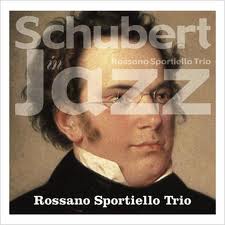A corner in Chicago’s Pilsen neighborhood: Google says it is “18th and Racine”:
then, multi-instrumentalist, arranger, composer Andy Schumm:
then, some music that ties the two together: a performance of Andy’s own “18th and Racine” on September 13, 2013 Jazz at Chautauqua weekend, with Dan Levinson, Dan Barrett, John Sheridan, Kerry Lewis, Ricky Malachi:
That’s an admirable piece of music, which nobody can deny. The players are dressed in adult business attire, but they are neither stiff nor constrained; in fact, there’s a bit of unscripted comic repartee before they start to play.
I have been digging through my archives to find previously unknown performances from Jazz at Chautauqua, starting in 2011. This video, this performance, was hidden in plain sight: it had been given to the larger YouTube public for free six years and a month ago. I was dumbstruck to see that it had been viewed fewer than one hundred times. Was it dull? Was it “bad,” whatever that means? Had the Lone YouTube Disliker come out of the basement to award it his disapproval? No, none of those things.
I write this not because my feelings are hurt (Love me, love my videos, or the reverse) but because I don’t understand this lack of enthusiasm.
“Pop” music videos are viewed by millions, and the audience for “hot jazz,” “trad,” whatever you want to call it, is a crumb in the cosmic buffet.
But — follow me. Invent a band with a clever name. Let them sit in chairs on the street in the sunshine. Let them be a mix of young women and young men. Let them be emotive. Let there be a washboard. Perhaps one of the members is fashionably unshaven. There are shorts, there are legs, there are sandals, there are boots. No one wears a suit, because buskers have their own kind of chic, and it has nothing to do with Brooks Brothers. If the members know who Strayhorn and Mercer are, they keep such knowledge to themselves. They are very serious but they act as if they are raw, earthy, primitive. Someone sings a vaguely naughty blues.
Mind you, this is all invention.
But let a fan post a new video of this imaginary group and in four days, eleven thousand people scramble to it.
I understand that my taste is not your taste. And I know that anyone who privileges their taste (“I know what the real thing is. I like authentic jazz!”) is asking for an argument. But . . . .”Huh?” as I used to write on student essays when I couldn’t figure out what in the name of Cassino Simpson was going on.
Is this the triumph of sizzle over substance? Is the larger audience listening with their eyes, a group of people in love with bold colors in bold strokes? Is all art equally good because some people like it?
And if your impulse now is to reproach me, “Michael, you shouldn’t impose your taste on others,” I would remind you that imposition is not my goal and shouldn’t be yours, and that there is no schoolyard bully at your door threatening, “Like what you see on JAZZ LIVES or else, and gimme your lunch money!”
Everyone has an opinion. I spoke with an amiable fan at a jazz festival. I had been delighting in a singularly swinging and persuasive band, no one wearing funny clothes or making noises, and when I told her how much pleasure I was taking, she said, “That band would put me to sleep! I like (and she named a particularly loud and showy assemblage whose collective volume was never less than a roar). I replied, “Not for me,” and we parted, each of us thinking the other at best misguided. Or perhaps she thought me a New York snob, and I will leave the rest of the sentence unwritten. The imp of the perverse regrets now, perhaps six years later, that I didn’t ask in all innocence, “Do you like Dunkin’ Donuts Munchkins?” and see what her reply was.
As the King says, “Is a puzzlement.”
Legal notice: no such band as described above exists, and any resemblance to a group of persons, real or imagined, is accidental. No one in the 2013 performance video asked me to write this post in their defense, and they may perhaps be embarrassed by it, for which I apologize. Any other questions should be directed to JAZZ LIVES Customer Service, to be found in the rear of our headquarters (look for the bright red cat door). Thank you.
May your happiness increase!












